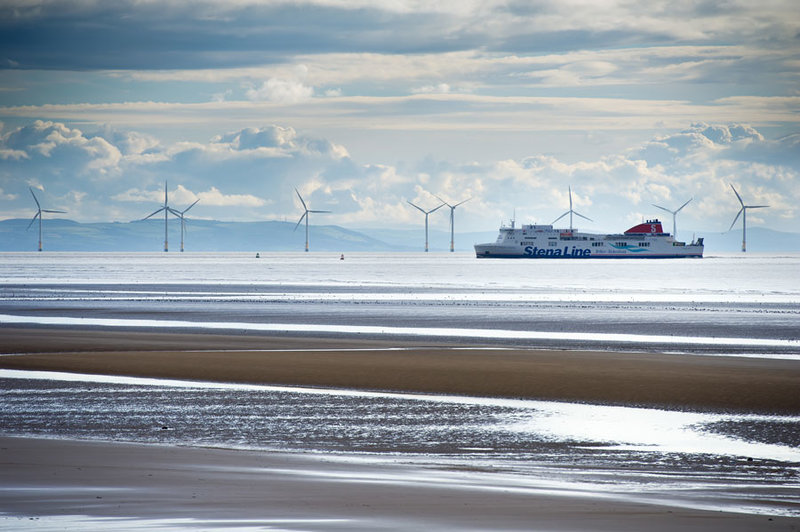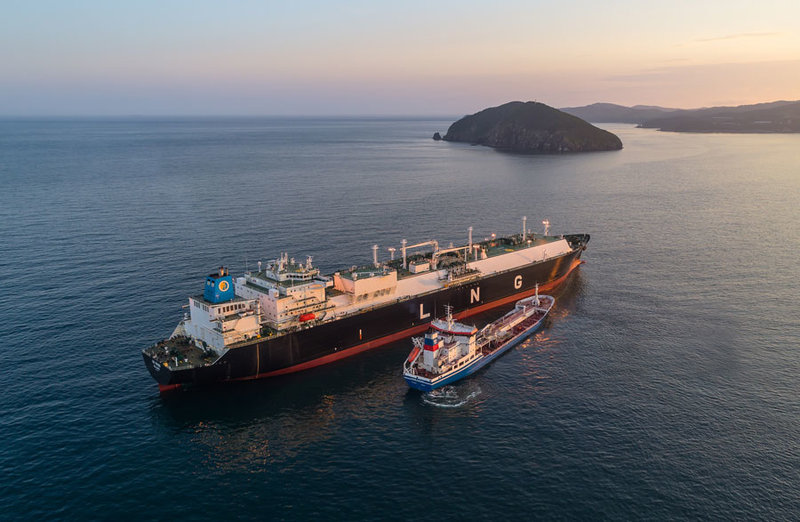Environment
Decarbonising maritime transport: what makes Sweden the leader?
A recent report has named Sweden as leading efforts to decarbonise maritime transport. What factors played a part in the country’s success, and can any of the lessons be transferred? EVA GREY reports
In March this year,
the International Transport Forum (ITF) and the Organisation for Economic Co-operation and Development (OECD) published a study analysing the factors that brought Sweden to the forefront of decarbonisation of maritime transport.
The report comes at a crucial time for the global shipping industry, when decarbonisation is both a major challenge to overcome and a huge ambition – recently, the International Maritime Organization (IMO) adopted a strategy to reduce at least 50% of greenhouse gas (GHG) emissions from the global shipping sector by 2050, compared to 2008.
In this context, Sweden is certainly leading by example, and is counted as one of the pioneers in sustainable shipping. The country is at the heart of an encouraging Scandinavian trend to adopt new generations of clean technologies.
In 2015, the Swedish Shipowners’ Association (SSA) established its aim to achieve zero-carbon shipping by 2050, therefore becoming one of the first shipping associations worldwide to commit to absolute emission reduction targets.
Its efforts both before and since are diverse and point towards a truly holistic approach to sustainability: from maritime clusters that stimulate cooperation and innovation, to inclusive platforms for exchange of knowledge and information, as well as key financial instruments, all have been instrumental in putting Sweden ahead of the game.
However, as much as it is admirable, the report points out that, put into a global context, its impact is fairly modest: Sweden makes up only 0.1% of the global merchant fleet, while the SSA currently counts 56 members that together own approximately 400 vessels. Of these, approximately 100 are flying the Swedish flag.
Still, precious lessons can be learned from a country that is leaps and bounds ahead of the rest of the world, in the hope that at least some of these good practices can be up-scaled globally.
Image courtesy of
A common front: from family business to government collaboration
One of the major factors that led to Sweden’s success in green shipping is the collective commitment of the maritime industry, together with the Swedish Government, to jointly set out on a sustainable path.
This collaborative mindset of today finds its roots in the birth of the Swedish shipping industry primarily as a family-based business.
As the report explains, most of the shipping families live on the island of Donsö, close to Stockholm, which “leads to knowledge spill overs usually associated with clusters, [where] many of the shipowners informally exchange with each other on technical innovations in ship design.”
It also helps that “Swedish shippers have a highly developed sense of corporate responsibility,” maximising the interest and exchange of green solutions. As of 2017, 31 cargo owners and 56 shipping companies were registered in the Clean Shipping Index (CSI), a scheme that enables them to gain recognition for their environmental performance, but also to secure economic opportunities on that basis. Banks and investors can also use CSI ratings to assess environmental performance when approving loans for the building of new ships.
As of 2017, 31 cargo owners and 56 shipping companies were registered in the Clean Shipping Index
Sometimes, these informal exchanges have turned into formal collaboration, such as the Gothia Tanker Alliance, in which six different Swedish tanker companies work together, pooling their 32 vessels.
At a national level, the industry seems to be equally open to collaboration and to following a clear-cut strategy. In 2009, SSA’s adoption of the EU Maritime Transport Strategy 2009-2018 paved the way for the adoption of the current Climate Roadmap, which includes a fixed and unambiguous target: a 30% emission reduction by 2030 (compared to 2010 level). While this can be realised with known technologies, alternative fuels and other ship-based measures, going forward, the clear realisation was that these measures were simply not enough, and a complete restructure of the transport system was needed.
This is how the Zero Vision Tool (ZVT) was born, a joint platform for cooperation and innovation. Launched in 2011, the platform brings together around 160 companies representing industry, government and academia, not just from Sweden, but from the entire Baltic region. According to its website, the ZVT is particularly important for small and medium-sized shipping companies which do not have their own technical departments.
The Swedish shipping industry is also involved in the Haga Initiative, a network where companies from different sectors meet to discuss similar challenges, such as financial, technological and regulatory uncertainty, that they face.

Image courtesy of JuliusKielaitis / Shutterstock.com
Svein Kleven is senior vice president of engineering and technology for Rolls-Royce. Image courtesy of Rolls-Royce
Walking the walk with LNG and alternative fuels
Some of the biggest achievements to have been born out of ZVT are a range of pilot projects on LNG bunkering and LNG and methanol-powered vessels.
The report highlights that Sweden is one of the first countries with substantial uptake of LNG-powered ships, ship-to-ship LNG bunkering ships, electric ships and methanol-powered ships.
Viking Lines operates the world’s largest LNG-powered passenger ferry between Stockholm and Turku in Finland, which also happens to be the first LNG-powered vessel in the Baltic Sea. In addition, a hefty share of ship orders from Swedish shipowners are for LNG-powered ships, while the ports of Brofjorden and Gothenburg both provide LNG bunkering facilities.
Viking Lines operates the world’s largest LNG-powered passenger ferry between Stockholm and Turku
Sweden was also one of the first countries to adopt electric ships. The most notable example is the ferries operated by HH Ferries Group between Helsingborg and Helsingør in Denmark, a project that saw two vessels being converted into fully electric ones, and the installation of charging infrastructure in the two ports.
Elsewhere, Stena Line is making strides to prove that methanol can be successfully used as ship fuel. Similar to LNG, methanol’s CO2 emissions reduction potential is around 25%. It can be produced from renewable energy resources, such as CO2 capture, industrial waste, municipal waste or biomass. The company converted the Stena Germanica, a large passenger and car ferry vessel operating between Gothenburg and Kiel in Germany, into a methanol-powered vessel. This was active for one year as part of a pilot to prove its technical viability.
The country’s ports are also following suit. Gothenburg and Stockholm were among the first in the world to introduce shore power facilities that allow ships to use electricity from the grid and turn off their engines when at berth.

Image courtesy of VladSV / Shutterstock.com
The challenge of upscaling: lessons learned
The report warns that challenges still remain, highlighting that “despite much progress, even in Sweden the decarbonisation of maritime transport is still at an early stage.”
Three pathways for better upscaling of current initiatives are identified: finance, public policies and international policy development.
A recurrent challenge for decarbonisation of shipping is the misalignment of fiscal policies with climate policies, meaning that at present, there are situations where polluting heavy fuel oil for ships is not taxed, while some of the alternative energy sources are actually taxed, thus hindering the transition to clean energy.
A recurrent challenge for decarbonisation of shipping is the misalignment of fiscal policies with climate policies
However, even if remaining challenges were to be overcome in Sweden, the report concludes that there is only so much that a state can do in isolation: “even if policies can move all Swedish shipping towards the level of the pioneers, the effect on global shipping emissions would still be marginal,” it reads.
“An upscaling of good practices from the national to global level is necessary for a substantial reduction of GHG emissions to take place. So the challenge is to disseminate and upscale some of the good practices from Sweden internationally. Other countries can learn from Sweden that it is possible to move towards decarbonisation of maritime transport even when the global level of ambition is still undefined.”